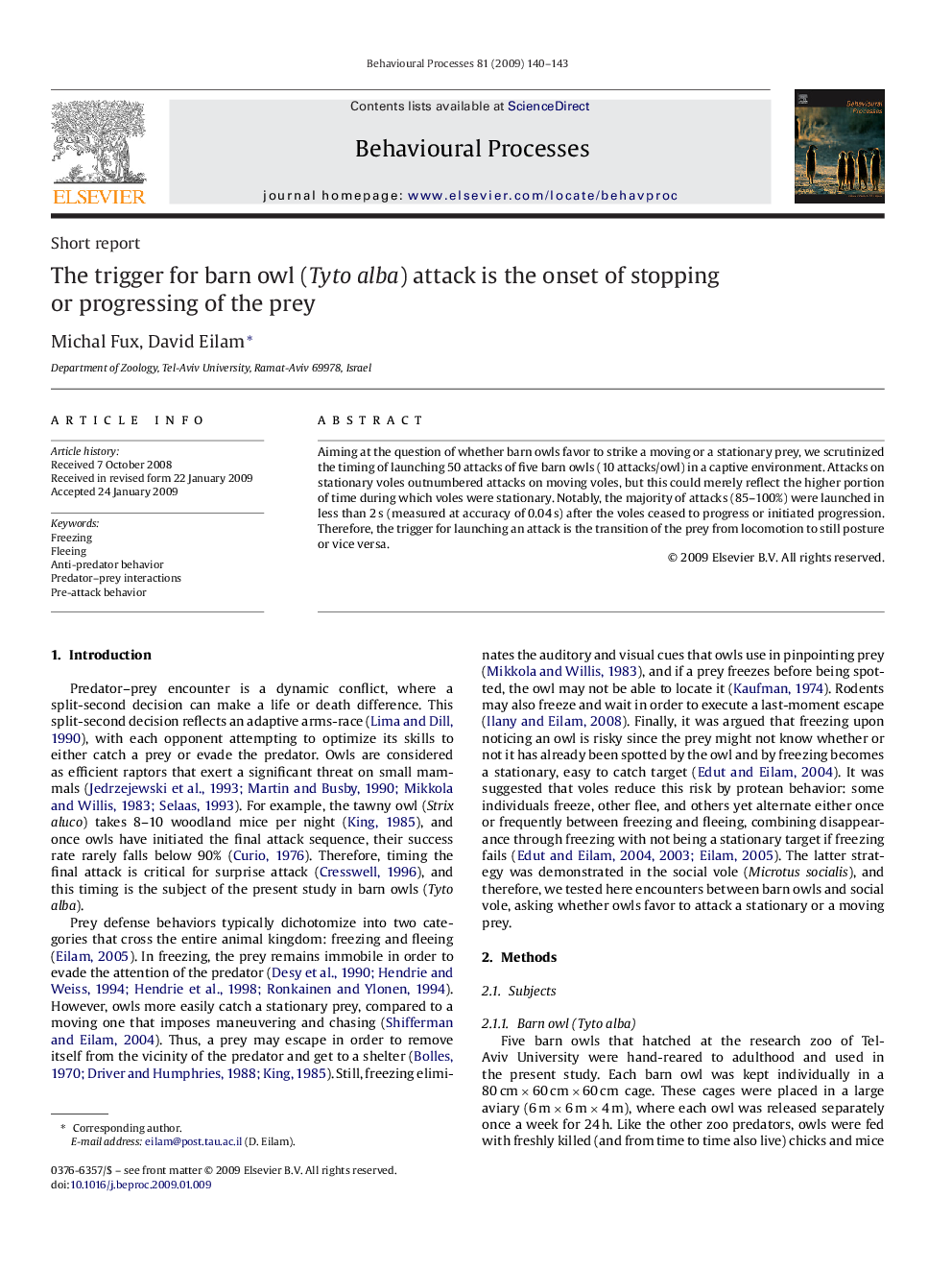| Article ID | Journal | Published Year | Pages | File Type |
|---|---|---|---|---|
| 2427560 | Behavioural Processes | 2009 | 4 Pages |
Abstract
Aiming at the question of whether barn owls favor to strike a moving or a stationary prey, we scrutinized the timing of launching 50 attacks of five barn owls (10 attacks/owl) in a captive environment. Attacks on stationary voles outnumbered attacks on moving voles, but this could merely reflect the higher portion of time during which voles were stationary. Notably, the majority of attacks (85–100%) were launched in less than 2 s (measured at accuracy of 0.04 s) after the voles ceased to progress or initiated progression. Therefore, the trigger for launching an attack is the transition of the prey from locomotion to still posture or vice versa.
Related Topics
Life Sciences
Agricultural and Biological Sciences
Animal Science and Zoology
Authors
Michal Fux, David Eilam,
